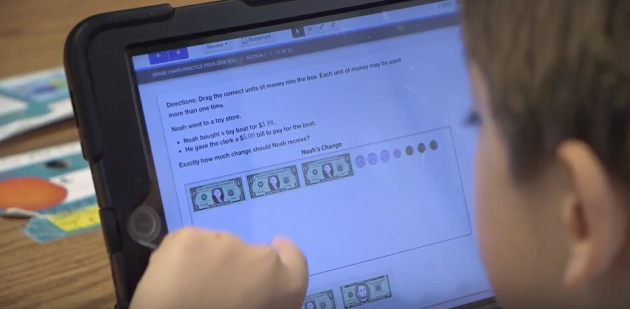Virginia Shortens SOL Math and Reading Testing Time and Expands Compatible Devices
The Virginia Department of Education (VDOE) is continuing its efforts to reduce the time it takes for nearly 300,000 elementary and middle school students to complete its end-of-the-year Standards of Learning (SOL) reading and mathematics tests. In addition, the VDOE has updated its test-delivery system, TestNav 8 from Pearson, to allow students to take the SOL tests on a wider array of devices, including iPads and Chromebooks.
First introduced during the 2014-15 school year, SOL tests use computer adaptive testing (CAT), which begin with a moderate question or problem and modify the difficulty level for subsequent questions based on the answer provided. In other words, if a student answers a problem correctly, then the next question will be slightly more challenging, while an incorrect answer will generate an easier question. SOL scores are determined by both the number of questions answered correctly and the difficulty of the correctly answered questions.
The current 2016-17 school year is the third year of a four-year plan to use CAT assessments, according to a VDOE news release. This spring, all math tests for grades 3 to 8 are computer adaptive (with exceptions for some algebra and geometry tests) and adaptive reading tests are being introduced in grades 3 to 5. There will be fewer items on both SOL tests.
Furthermore, the VDOE has been working to expand the types of devices approved for use in the administration of online SOL tests, according to its website. The TestNav 8 software that is compatible with Microsoft Windows-based and Mac OS-based workstations now supports the use of additional touchscreen devices like Chromebooks, iPads and Android tablets.

A student uses an iPad to take the Virginia Standards of Learning math test. Image Credit: YouTube.
“This upgrade simplifies the logistics of SOL testing for many schools because principals and testing coordinators don’t have to move hundreds of students through a limited number of computer labs,” Superintendent of Public Instruction Steven R. Staples said in a statement. “Students can test in their classrooms with devices they’ve used all year.”
“SOL testing is just one of the many things that any busy school does in a given school year and we want to minimize the hours students spend testing and maximize the hours that they spend in quality instruction with teachers face to face,” said Kume Goranson, principal at Bailey Bridge Middle School, in a VDOE video. “Having a Chromebook enables use to reduce our testing window so that students are able to take their test the first time and if necessary take an expedited retake in an even shorter time frame.”
“Using the iPad devices makes it much more simple I would say for students and for teachers as well,” said Tina McCay, principal at Goochland Elementary, in the video. ”They are much more comfortable on their iPads and they are able to manipulate them a lot better than using a laptop.”
The fourth phase for the 2017-18 school year will involve adaptive reading tests for grades 6 to 8.
To learn more, watch the video below or visit the Virginia Department of Education site.
About the Author
Sri Ravipati is Web producer for THE Journal and Campus Technology. She can be reached at [email protected].